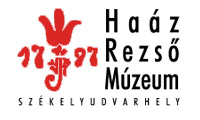Kovács Petronella (szerk.): Isis - Erdélyi magyar restaurátor füzetek 8-9. (Székelyudvarhely, 2009)
Puskás Éva: A Szatmári Római Katolikus Egyhámegye kulturális javaainak megmentése
focused into a 10-1000 nm spot. These electrons then spread in the material into a sphere like excitation volume. The shape and size of this volume is determined by the Rutherford scattering of the electrons in the Coulomb field of the nuclei of sample atoms, and depends on the mean atomic number of the sample and the energy of the electron beam, typically falling between 0.5 and 5 micrometer in most of the cases. Some of the electrons even turn back and re-emitted from the sample surface, as a result of subsequent elastic processes, giving the so called backscattered electron intensity (BEI) The electrons are loosing their energy by inelastic interactions with the atoms, generating secondary electrons (SEI) from the outer shell ionization, and X-ray lines from the inner shell ones. The energies of each line is characteristic to the atom emitting it, so measuring the energy spectrum of the emitted X rays, from the line energies we can conclude to the qualitative composition, while from the relative intensities of the lines we can perform quantitative analysis of the excited volume. In the early fifties optical microscope was used to choose the micrometer sized point of analysis on the surface of macroscopic sample. The EMPA became really popular in the sixties, when it was combined with the just spreading SEM. The scanning electron microscope (SEM) provided picturesque results after simple preparation of an extremely wide sphere of samples detecting and imaging the secondary electron intensity (SEI), generated from the sample by a TV-like scanned focused energetic electron beam. Its popularity increased by its simple design and operation, large depth of focus and magnification range (lOx — lOO.OOOx). Due to the scanning principle the beam could be stopped at any point of the image, providing an excellent X-ray source for the EPMA analysis. Although any signal generated in the electron-solid interaction can be used for imaging in a research SEM, the relatively simple and picturesque basic working modes, as SEI and BEI did not loose their popularity. The SEI provides stereo-like images of highest magnification with extreme sensitivity to small details, while detecting the total backscattered intensity (BEI-COMPO) the shades of gray on the image reflect the changes of mean atomic number variation, i.e. phase map of the sample surface, providing an ideal image to localize the areas of interest for a subsequent (but more time consuming) set of X-ray microanalyses, or element mapping. A.L. Tóth, PhD CSc Physicist Research Institute of Technical Physics and Materials Science of the H.A.S. (MTA MFA) Budapest Phone: +36-30-984-3763 E-mail: tothal@mfa.kfki.hu Márta Járó Metal threads in “fake or poor trimmings” and other “inferior” fabrics Manufacturing technique of copper-based solid metal threads and possibilities of their quick identification Knowledge of the materials used for the production of historic fabrics and embroideries is indispensable to their exact technical description, for selecting the appropriate methods of their conservation treatment. The most sensitive and technically the most complex representatives of these materials are probably the metal threads often used for decoration. One of the most interesting groups of the more than seventy metal thread variations identified up to now, is composed of the so called “fake gold and silver threads” used mostly for weaving and embroidery in the modem period. The basic raw material was copper at the production of these threads mentioned in the contemporary sources as ones from Leon, Lyon, Nuremberg, etc. The copper base was “surface treated” in various ways so that it looked like gold or silver, or it was alloyed with metals that coloured it to a golden or a silvery shade. These threads have often been mistakenly described as gold or silver threads in publications, and the fabrics decorated with them cleaned and conserved as if they were made of precious metals. These imitations are generally less resistant to the deteriorating effects of the environment than those made of precious metals. The copper and its alloying elements corrode easier than gold or silver, and the thin surface layer/layers on the copper base can easily be removed together with the corrosion products during the mechanical or the chemical cleaning. So the fabric will be aesthetically changed and important historical and technical data can be lost. After a short historical review, the author deals with the manufacturing technique of the known copper-based metal threads and the simple identification methods of the various thread types. The knowledge of the manufacturing technique helps the identification of the threads and the interpretation of the results of simple microscopic, micro-chemical and sophisticated instrumental analyses. With the description of the production method, the author intends to create a starting point and to offer help to those who wish to deal with these threads either systematically or in connection with a certain fabric. The “collection” is far from being complete; the analysis of further thread-samples mainly from textiles dated to the 18th-20,h centuries, and the study of further contemporary descriptions can lead to the identification of numerous other versions. The copper-based threads are categorized by materials. The author deals with gilded copper, silver-coated copper, silver-coated and then gilded copper, brass, brass-coated copper and some other copper-based metal threads identified in fabrics dated from the 19th-20,h centuries. Within the individual groups, the different technical solutions are discussed separately. 186
